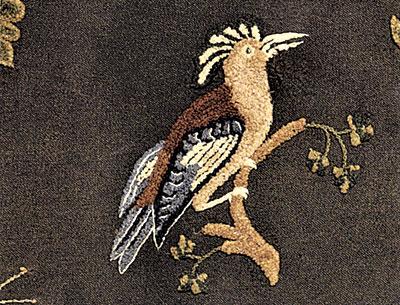Beecher School In East Hampton Village Hall

In the spring of 1806, an advertisement appeared in The Suffolk Gazette, a short-lived broadsheet published in Sag Harbor:
The public are informed, that a SCHOOL will be opened in the family of the subscriber, about the 15th of June next, for the instruction of young ladies in the branches usually taught in boarding schools, such as Reading, Writing, Grammar, Geography and History, Needle-work in its various branches, Drawing, and the French language. A number of pupils can be accommodated with board in his own family.
East-Hampton, May 3, 1806
Lyman Beecher
The “subscriber,” who at the time had been minister of the East Hampton Presbyterian Church for seven years, may have placed the ad, but it was his wife, Roxana, who would run the school, with the help of her sister Mary. That such a little-known enterprise existed during the Beecher family’s relatively short stay here adds an engaging chapter to the history of the Beecher House, now East Hampton Village Hall.
According to Jan Whitlock, the author of “American Sewn Rugs,” there were as many as 40 of these “female academies” along the Eastern Seaboard between 1805 and 1839, from Maine to Tennessee. The Beecher School was one of the earliest. It seems to have been established more out of necessity than inclination: The Beechers had four children by 1806 (Harriet, of “Uncle Tom’s Cabin” fame, was not born until 1811) and not enough money. The Rev. Dr. Beecher’s salary of $400 a year, paid in part with firewood, furniture, and food, was apparently not enough to keep him in the style his congregation expected of him as a graduate of the Yale Divinity School and a man of the cloth. The boarding school was a genteel effort to help pay the bills.
Sewing and embroidery were considered, in the early 19th century at least, as important to the education of well-brought-up young ladies as reading and writing, and affluent families paid well to have their daughters taught these skills. In fact, Ms. Whitlock writes, to educate a girl could cost them as much as three times as it did a boy, “owing to the cost of materials suchas imported silks, linen, and framing” necessary in needlework. With very few exceptions, then, the hand-sewn rugs that have come down to us from this time — a time when rugs were used for display as stool covers, hassocks, and the like, rather than workaday floor coverings — were created by upper-class girls whose families could pay the price.
The minister’s wife, Roxana Foote Beecher, came from a prosperous Connecticut family. The East Hampton historian Averill Dayton Geus, whose pamphlet about the Beecher House is available at Village Hall and Home, Sweet Home, described her last week as “an extremely enterprising, ambitious, and accomplished woman” with an eye to the grindstone, in contrast to her husband, whose head, said Mrs. Geus, “was always in the clouds.”
Dr. Beecher was diligent about paying calls on his parishioners, and “every place he went, they gave him a cordial,” she said. “I think he was kind of loopy.” His daughter Catherine Esther, reminiscing about the school in the 1864 “Autobiography of Lyman Beecher,” put it perhaps more diplomatically: “With his house full of young people, father’s constitutional mirthfulness developed itself more freely than ever afterward.”
Indeed, in later life Dr. Beecher preached fierce sermons against the evils of alcohol, becoming a leader of the Temperance movement. History judges him one of the most influential ministers of his time.
Between 1806 and 1810, when he was called to a new congregation in Litchfield, Conn., the Beecher School had 11 students that we know of. Two of them with familiar local names, Sarah Isaacs Payne (a sister of John Howard “Home, Sweet Home” Payne) and Mercy Huntting, must have been day students; the rest were boarders. One young woman came all the way from Honduras, accompanied by her piano, reportedly the first ever seen in East Hampton.
A yarn-sewn wool-on-wool rug featuring hoopoe birds, created by Mercy Huntting while a pupil at the Beecher School and recently sold for $18,000, came to light in 1951 and was featured that May in The Magazine Antiques. Ms. Whitlock credits the rediscovery of Mercy’s rug with having “brought to light a new understanding of rugs and the schools that taught this work.”
The author of that 1951 article was a friend of Ettie Hedges Pennypacker, a direct descendant of Mercy Huntting’s and the owner of the rug at that time. Her husband, Morton Pennypacker, established what is now the Long Island Collection at the East Hampton Library. And today, on the second floor of Village Hall, what was once the schoolroom of the privileged young gentlewomen of the Beecher School is now the office of East Hampton Village Mayor Paul F. Rickenbach Jr.
